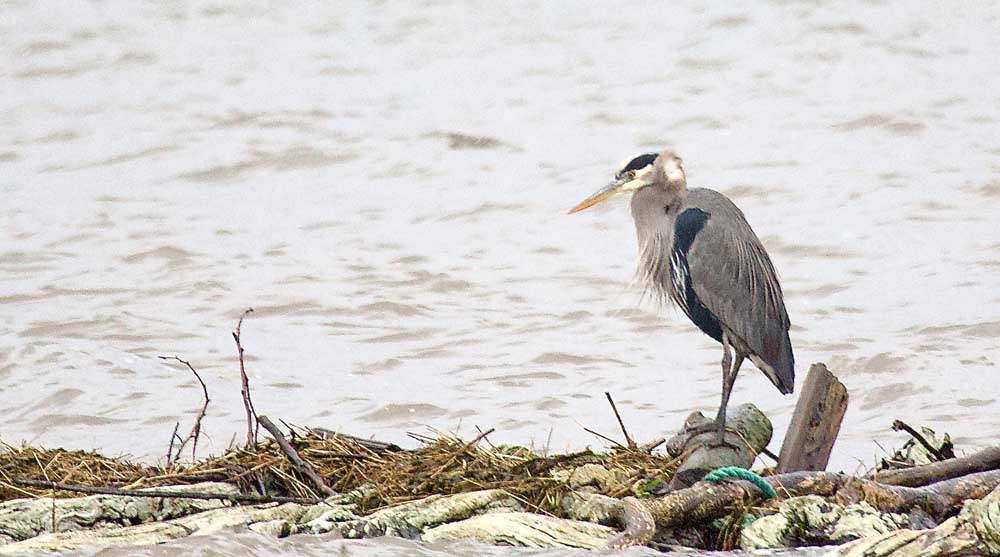Looking back: Winter bird sightings suggest interesting trends
Published 6:00 am Sunday, April 7, 2024

- Great blue herons have always been visible during the winter months. They are most often seen at low tide along the shore of Willapa Bay and in tpeninsulas harbors.
Winter has come and gone. Most of us saw a large variety of species in the wetlands, in Willapa Bay, in our yards and at our feeders this winter, but the number of individuals for many species were down. At least, that is what I noticed.
Waterfowl such as green-winged teal, northern pintail, and even mallards were down compared to the numbers I have seen other years. One exception might be the American wigeon. Hundreds were seen in our wetlands during the latter part of February. I suspect, however, that these were migrants heading north to their breeding grounds.
Townsend’s warblers were numerous in past years, this year very few were seen foraging in the treetops. Dark-eyed juncos were few and far between at our feeders this year. Black-capped chickadees were almost nonexistent, but there were many chestnut-backed chickadees in the yard, at our feeders and many were always heard on nature walks in the forests of the north end of the Peninsula.
We had a few rarities this winter too, including unusual sightings of an ancient murrelet and the yellow-billed loon. The latter has also been observed in other areas of Pacific County. We are lucky to see them. Both species were seen at the Port of Peninsula in Nahcotta.
Our changing climate patterns could be part of the reason some species are down in numbers in our area. Those species that come from the north may not have come south as far this year because the weather was warmer, so they stayed if the food was plentiful. Snowy owls and rough-legged hawks, for example, are two species that didn’t materialize in large numbers on the 2023-2024 winter raptor survey, which was conducted in many western states. Similar reasons may be why we saw fewer species coming from the south too.
Some scientists think that many north and south winter migrants were just stopped on their way by warmer weather coupled with food supplies. Others seem to feel that the avian flu may have had a bearing on waterfowl populations. However, no one seems to know for sure. So far there is no scientific evidence to confirm the cause(s).
I thought it would be interesting and informative to look back at the species that came to visit us this past winter along with a few who came last winter or every winter. Some, like the great egret, are just occasional visitors. They seem to make an appearance every few years on the Peninsula. This photo essay is today’s birding column.
Happy birding!








